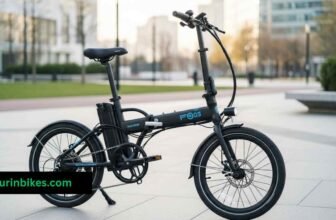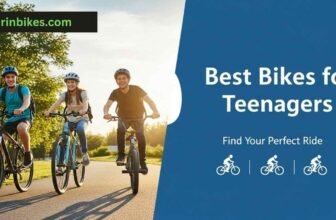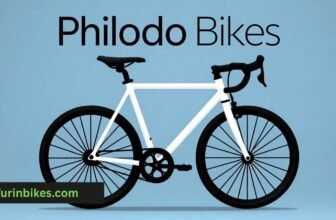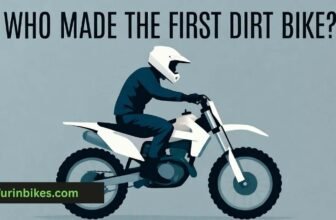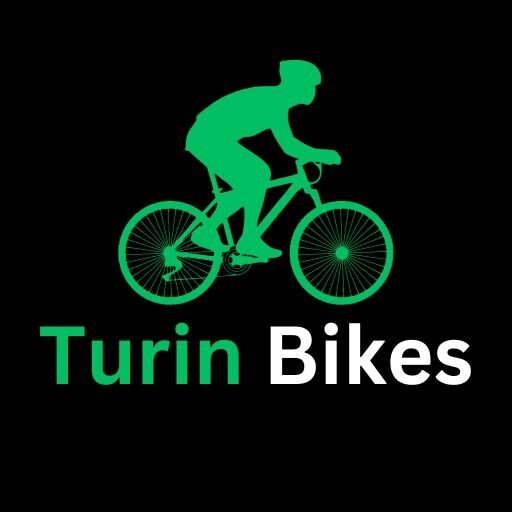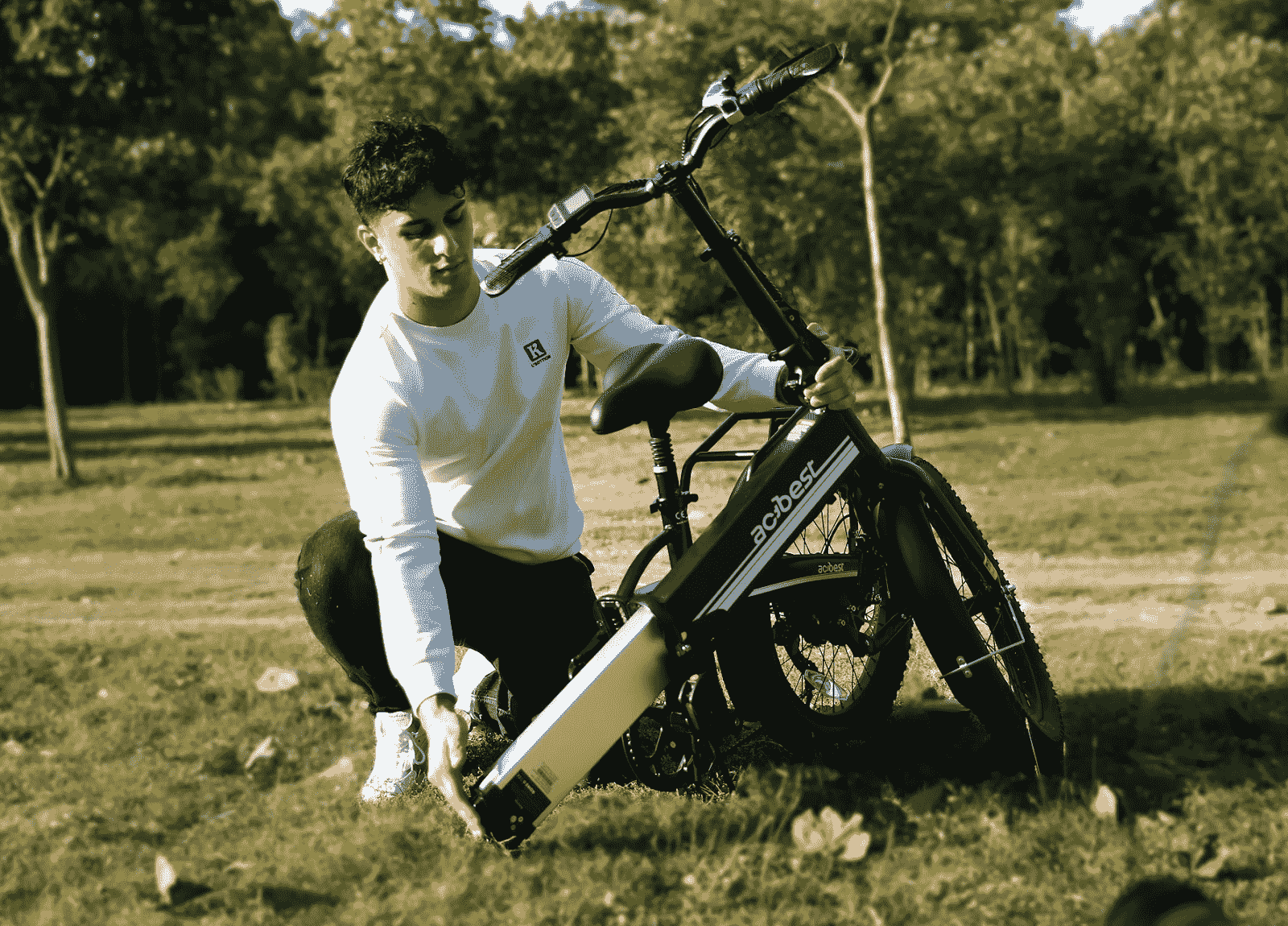
If you’re dreaming about zipping through city streets or cruising along bike paths on an electric bike, you’re probably wondering: “How fast can these bikes really go?” Understanding speed factors is more than just looking at motor power ratings. Getting the speed you want from an e-bike isn’t rocket science, but it does involve several key factors working together. Let’s explore the key factors that determine how fast your e-bike can go and help you choose (or optimize) the right one for your needs.
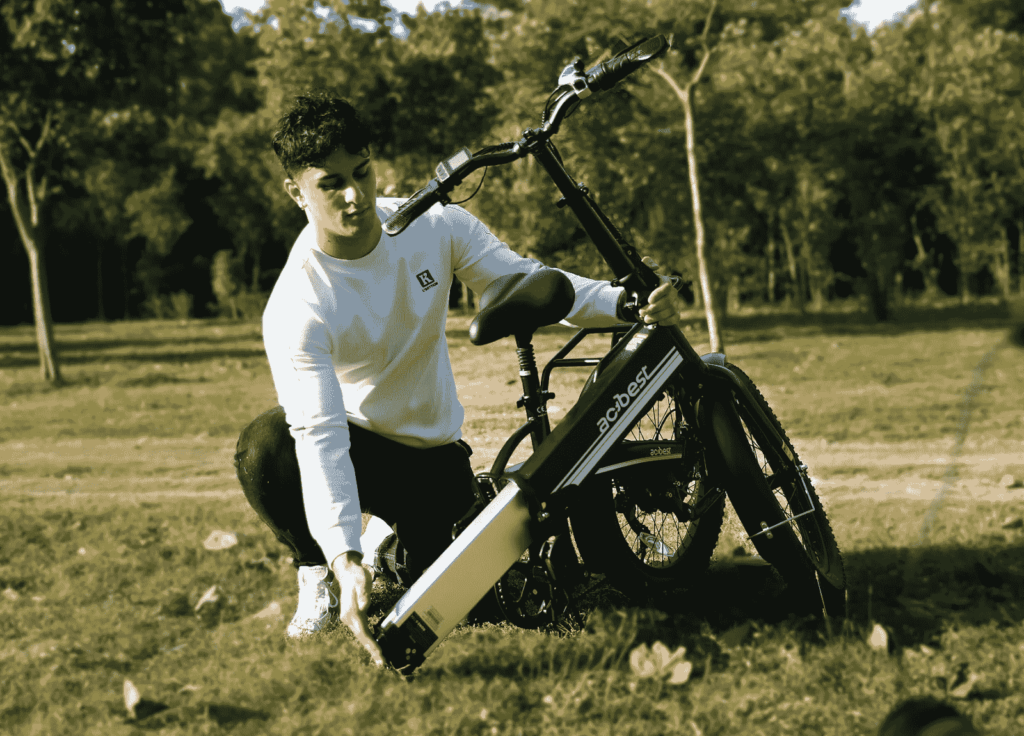
What Factors Influence Electric Bike Speeds?
First, you should know what makes your e-bike go faster or slower. The way you ride will depend on all of these things working together. While most e-bikes in the US are limited to 20-28 mph for legal reasons, many elements affect how quickly you can reach and maintain these speeds:
Motor Power and Types
The motor is your e-bike’s heart. Most e-bikes come with motors ranging from 250W to 750W, with some premium models reaching 1000W. Hub motors (in the wheel) and mid-drive motors (at the pedals) each have their advantages. E-bikes featured with hub motors are generally cheaper and good for flat terrain, while mid-drive motors will be better for hills, and more efficient in power-delivery.
Battery Capacity and Voltage
Battery specifications significantly impact your speed potential. Higher voltage (36V vs 48V) generally means better acceleration. Larger capacity (measured in Ah) affects range more than speed. Premium batteries maintain better performance even as the charge depletes.
Weight Factors
On average, e-bikes weigh between 45 to 60 pounds, but the weight of the rider and any cargo also plays a crucial role in performance. For instance, consider a scenario involving a 250W motor: it will operate differently depending on whether it’s carrying a 150-pound rider or a 200-pound rider with a 20-pound backpack.
Terrain and Conditions
When you’re on flat ground, it’s usually pretty easy to keep your top speeds up. When you tackle a 5% grade hill, your speed may drop by about 25 to 30%. Also, riding into a headwind can slow you down by 5 to 10 mph and make each pedal stroke feel harder. For safety reasons, you should also go slower when it’s raining, because wet roads increase the risk of skidding. With these things in mind, you can get a better idea of how different weather conditions will affect your ride.
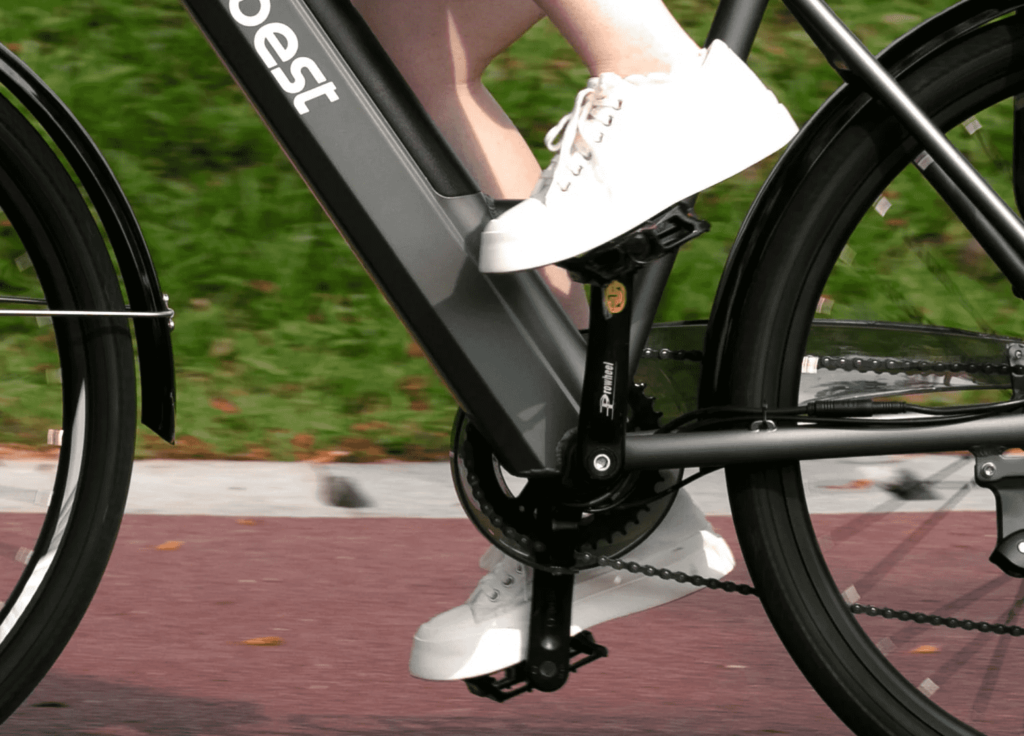
How Far Can You Expect to Go on an Electric Bike?
Most modern e-bikes offer these ranges based on riding mode:
● Pedal-assist mode: 40-100 miles
● Throttle-only mode: 20-40 miles
Here’s a helpful comparison table:
| Battery Size | Riding Style | Terrain | Estimated Range |
| 400Wh | Low assist | Flat | 60-80 miles |
| 400Wh | High assist | Hilly | 25-35 mile |
| 600Wh | Low assist | Flat | 80-100 miles |
| 600Wh | High assist | Hilly | 35-45 miles |
Effective Tips to Maximize Your Range with E-Bikes
Want to squeeze every possible mile out of your e-bike’s battery? Several simple habits can make a surprising difference in your riding range.
● First, have tire pressure checked weekly with a reliable gauge and maintain the recommended PSI (usually printed on the tire sidewall). Low tire pressure might feel smoother, but it can slash your range by up to 15% due to increased rolling resistance.
● Use lower assist levels when possible. Try using lower assist levels on flat sections and only bump it up for hills or headwinds – you’ll be amazed how much longer your battery lasts.
● Keep battery between 20-80% charge. This not only extends your battery’s lifespan but also maintains its optimal performance.
● Plan routes to avoid steep hills. That scenic hill might be tempting, but steep climbs can drain your battery up to three times faster than flat roads. Use bike-friendly navigation apps to find flatter alternatives, and if possible, plan routes where you can use regenerative braking on descents to recapture some energy.
● Even small tweaks like carrying less weight in your backpack or maintaining a consistent pedaling rhythm can add several miles to your range.
How to Choose the Right E-bike for Your Speed Needs
Now that we understand what affects e-bike speed and range, let’s look at how to choose the right e-bike for your speed needs.
Learning E-Bike Classes and Speed Limits
In the US, e-bikes are categorized into three distinct classes, each with its own capabilities.
● Class 1 bikes offer pedal assistance up to 20 mph – perfect for beginners and most recreational riders.
● Class 2 bikes add a throttle option while maintaining the same speed limit as Class 1. This means you can ride without pedaling when needed.
● If you want more speed, Class 3 bikes can go up to 28 mph with pedal help. This makes them great for riders who want to keep up with traffic or make longer trips.
Matching E-bike Speed with Style
Your ideal e-bike depends heavily on where and how you plan to ride.
● Road e-bikes excel on pavement and can easily maintain high speeds thanks to their aerodynamic design and efficient power delivery.
● If you’re planning to tackle varied terrain, a mountain e-bike like the Actbest Ranger offers the perfect blend of speed and stability – its robust suspension and wider tires let you maintain momentum even on technical trails.
● For urban riders, commuter e-bikes such as the Actbest Speedy Folding e-bike between speed and practicality, offering reliable cruising performance while including practical features like racks and fenders.
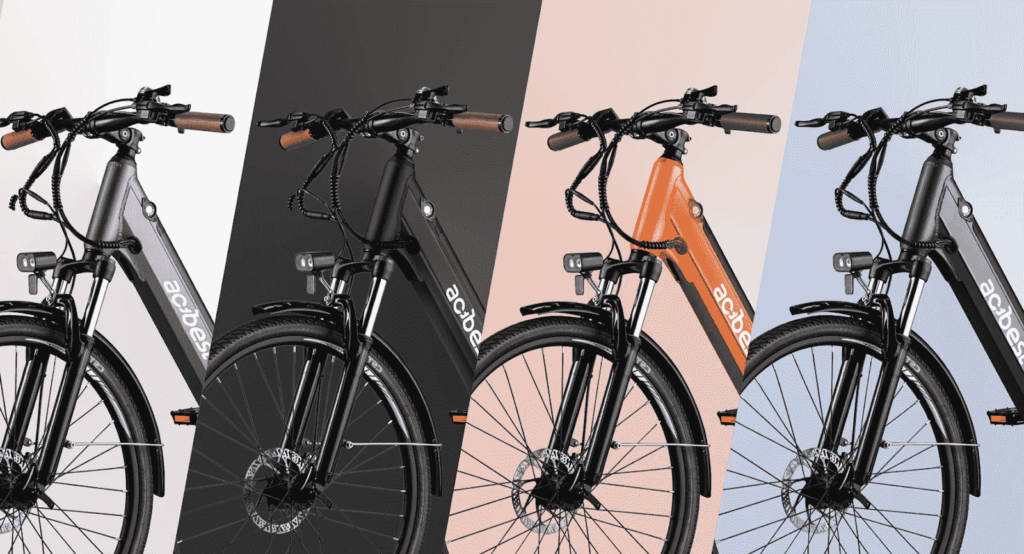
Considering E-Bike Features for Best Speed Performance
When shopping for a fast e-bike, paying attention to these key components will help you make an informed decision that matches your speed goals:
● Motor Selection: Mid-drive motors generally offer better performance than hub motors for speed-focused riding. Look for motors with at least 250W nominal power for city riding, or 500W+ for hilly terrain. Check torque ratings and aim for at least 65Nm for strong acceleration and hill climbing.
● Battery Specifications: Start with minimum 400Wh capacity for decent range at higher speeds. Consider 500-700Wh batteries for longer rides or frequent high-speed use. Look for 48V systems over 36V for better acceleration and sustained speed. Check if the battery is removable for convenient charging and potential future replacement.
● Frame Considerations: Frame material significantly impacts both speed and price. Aluminum frames offer a good balance of weight and affordability. If budget allows, carbon fiber frames can provide ultimate lightweight performance but will cost more than aluminum frames. Look for aerodynamic features like internal cable routing and geometry that support an efficient riding position.
● Tire Selection: Your tire choice should match your primary riding environment. For pure road speed, choose 28-35mm smooth tires that minimize rolling resistance. Urban commuters should consider 35-42mm puncture-resistant tires that balance speed with durability. Mountain riding needs 2.3-2.6″ knobby tires for maintaining control at speed on varied terrain.
Before making your final decision, always test ride different models to compare acceleration and handling. Read user reviews focusing specifically on speed performance, and check local regulations for speed limits. Consider factors like future upgradability and the cost of appropriate safety gear for your intended speeds.
Find Your Perfect E-Bike Speed Match
As e-bike technology continues to evolve, you can expect to see more efficient motors, better batteries, and smarter control systems. Whether you’re looking for a fast commuter or a powerful trail bike, understanding these factors will help you choose and maintain the perfect e-bike for your needs.
Meet Sachin Kumar, an avid cyclist and bike enthusiast with a passion for two-wheeled adventures. At our Turinbikes site, Sachin shares expert insights, thrilling ride experiences, and tips for fellow bike lovers.


